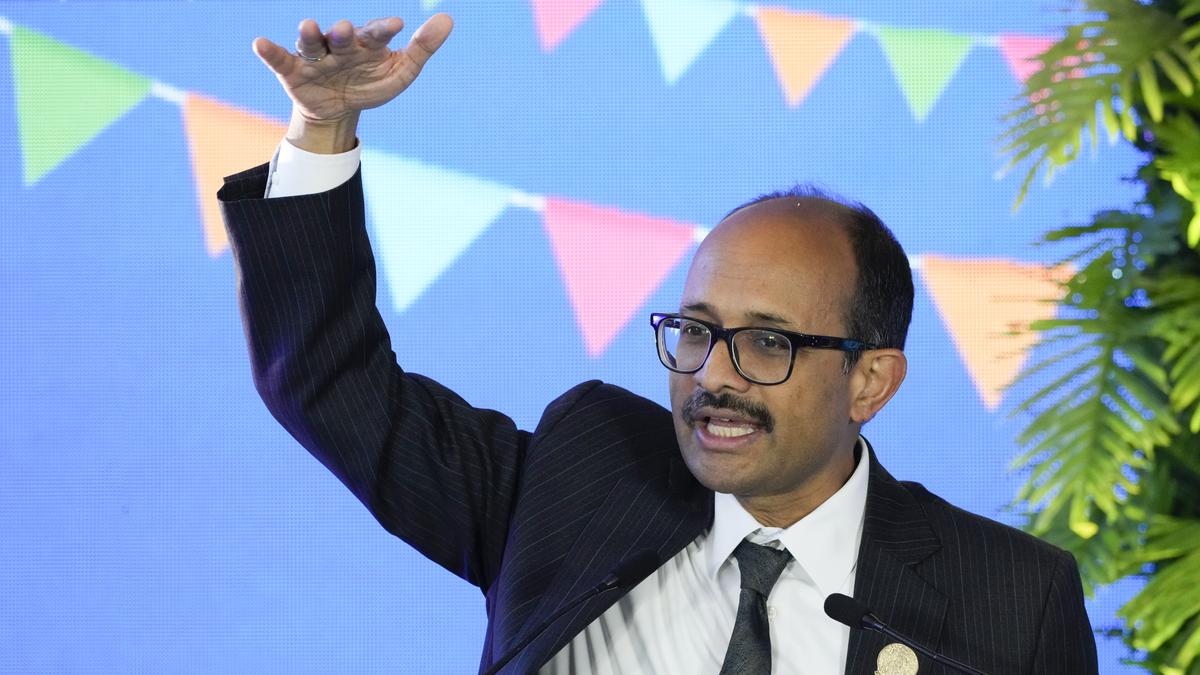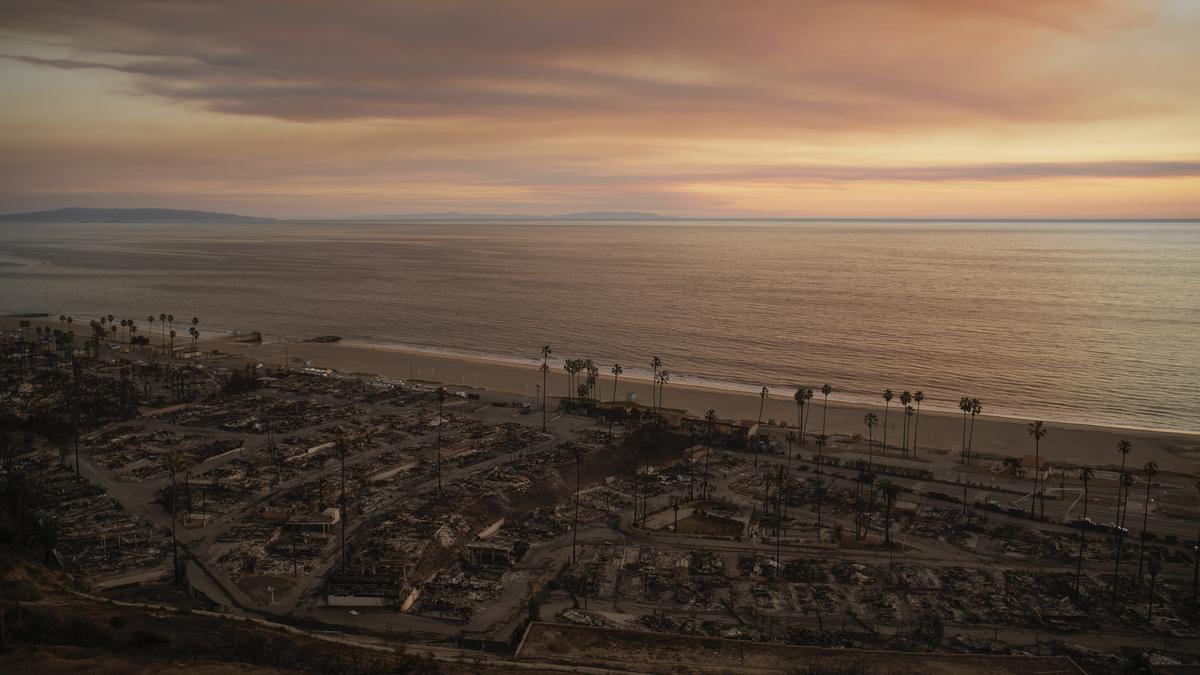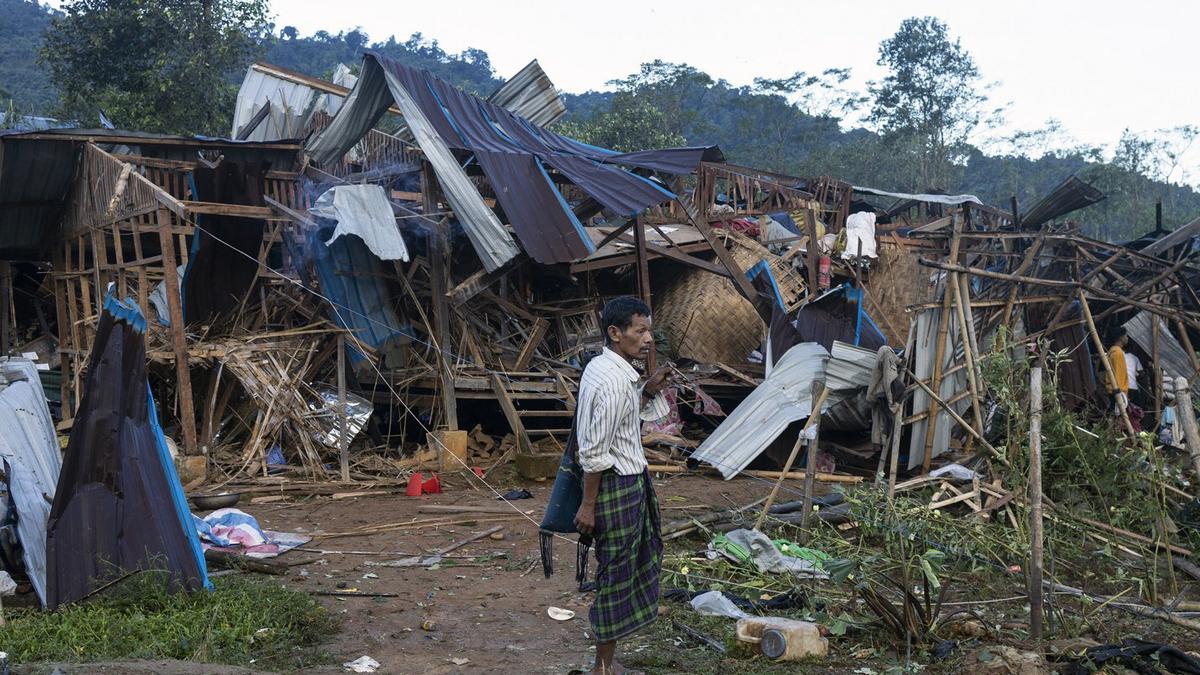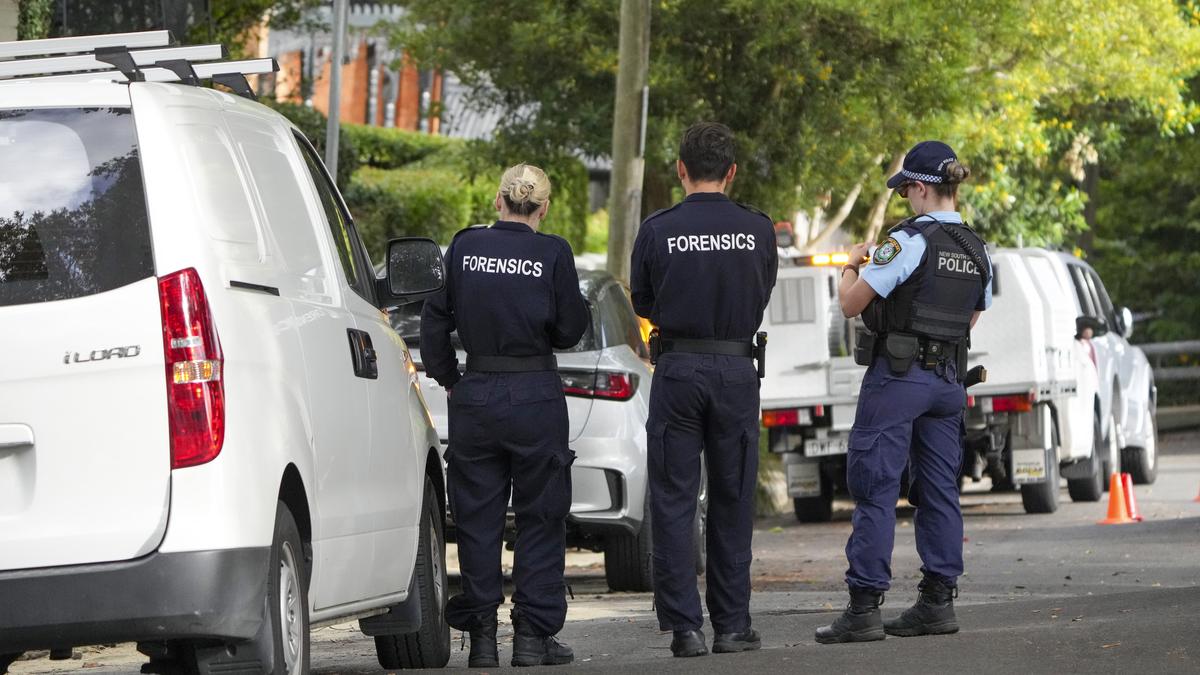Disasters, including those wrought by fiercer storms, threaten more people and could derail economic progress in the Asia Pacific region if governments don’t invest more in disaster mitigation and prevention, a U.N. official said Tuesday, October 15, 2024.
U.N. Assistant Secretary-General Kamal Kishore, who heads the U.N. Office for Disaster Risk Reduction, issued the warning in a speech at the start of a regional conference on disaster mitigation hosted by the Philippines, one of the world’s most disaster-prone countries.
Also Read: Climate change and how hurricane Milton became a Category 5 storm
“Disasters are now affecting record numbers of people and threatening their lives and livelihoods,” Mr. Kishore told hundreds of delegates to the three-day conference in Manila led by Ministers in charge of disaster mitigation and response across the Asia Pacific.
“Left unchecked, these disaster risks threaten to derail the development aspirations of the Asia Pacific region and push back progress that has taken decades to achieve,” he said.
In pictures: Rage of Hurricane Helene
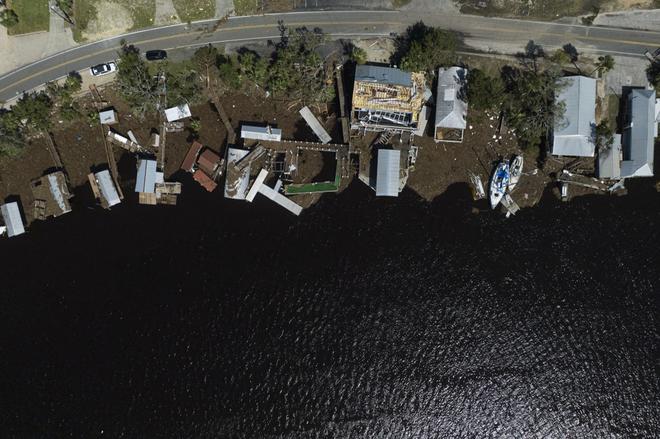
Structures destroyed on the bank of river Crystal after Hurricane Helene made landfall in Steinhatchee, Florida.
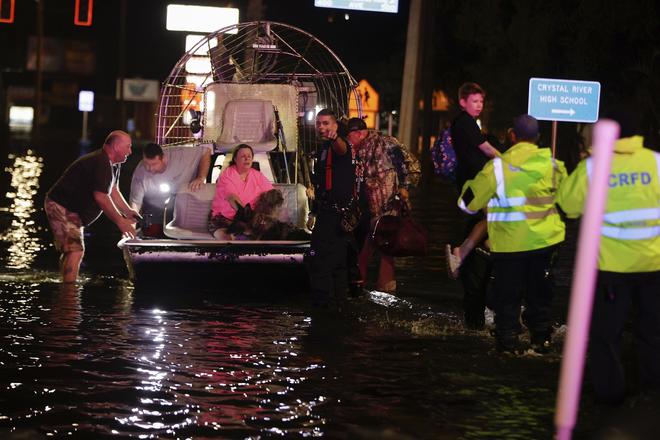
People and pets are rescued from flooded neighbourhoods in the aftermath of the hurricane on Friday (September 27, 2024) in Crystal River, Florida.
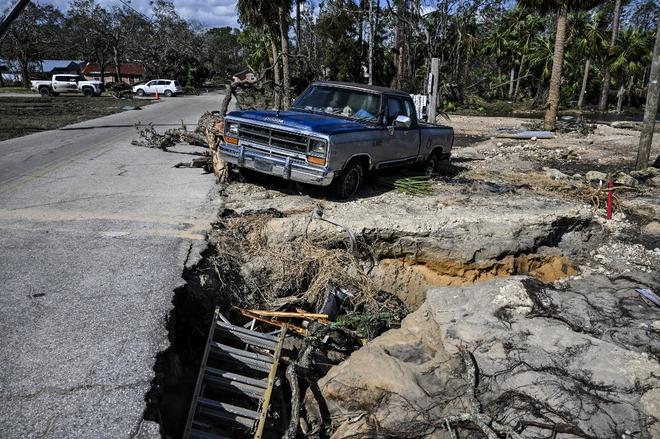
Western North Carolina was essentially cut off because of landslides and flooding that forced the closure of Interstate 40 and other roads.
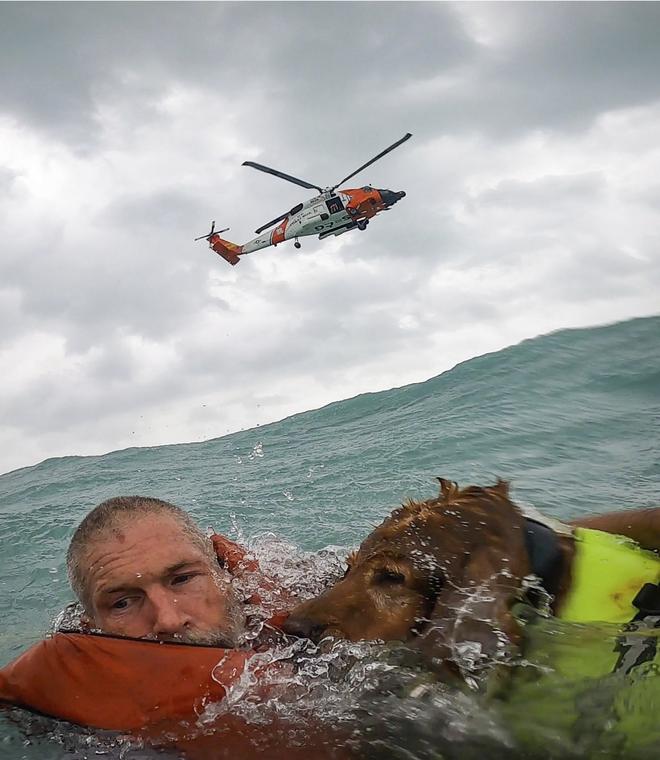
A man and his dog being rescued after his sailboat became disabled during Hurricane Helene approximately 25 miles off Sanibel Island, Florida on Thursday (September 26, 2024)
The hurricane caused several billions of dollars of destruction across the southeastern U.S.
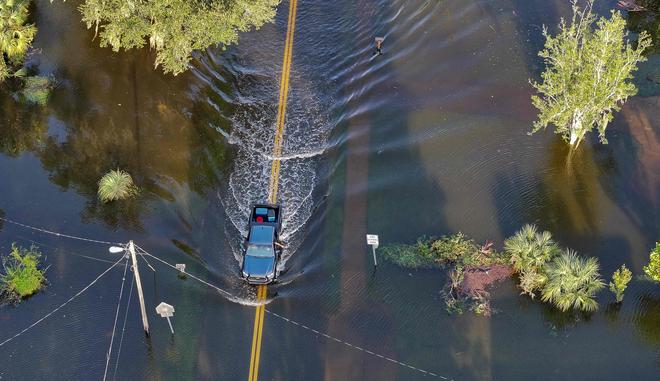
Several flood and flash flood warnings remained in effect in parts of the southern and central Appalachians, while high wind warnings also covered parts of Tennessee and Ohio.
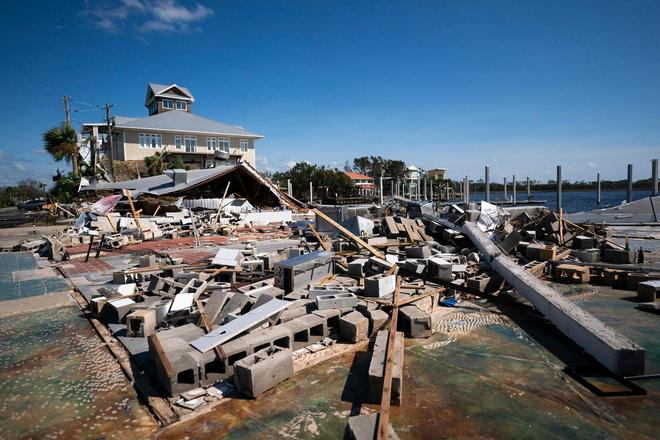
Moody’s Analytics said it expects $15 billion to $26 billion in property damage.
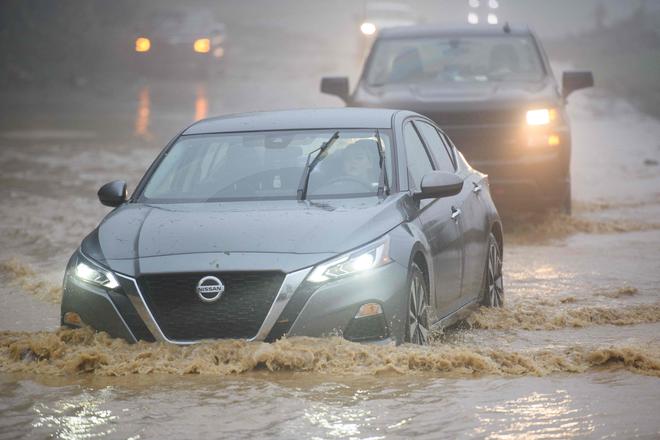
Officials urged people who were trapped to call for rescuers and not tread floodwaters, warning they can be dangerous due to live wires, sewage, sharp objects and other debris.
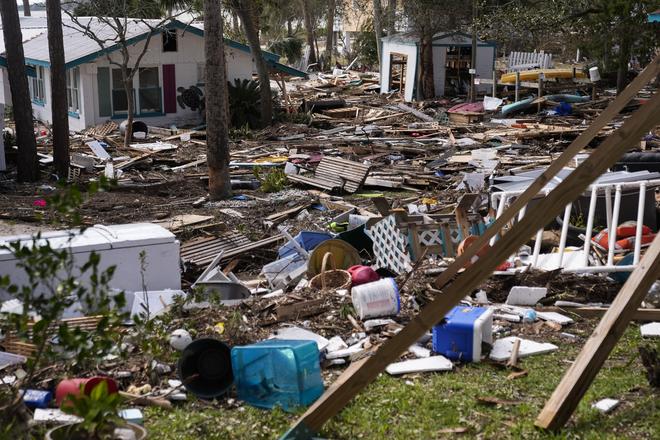
The hurricane led to the destruction of private properties worth of billions of dollars.
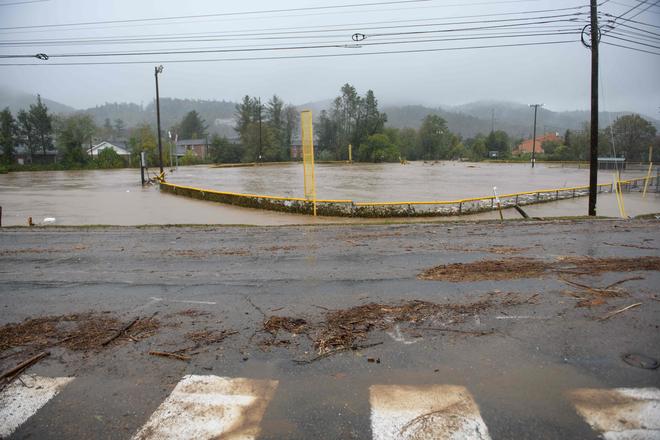
An athletic field is flooded after heavy rain and filling with debris on September 27, 2024 in Boone, North Carolina.
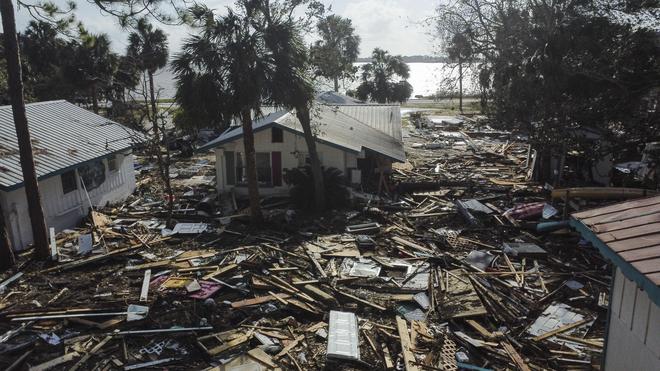
A Motel is seen in the aftermath of Hurricane Helene, in Cedar Key, Florida on Friday (September 27, 2024)
A drone view shows a flooded and damaged area, following Hurricane Helene in Steinhatchee, Florida. Some neighborhoods were so badly flooded that only car roofs could be seen poking above the water.
Homes are levelled in the aftermath of Hurricane Helene in Horseshoe Beach, Florida.
A mother and her son seen walking towards their home severely damaged after the hurricane.
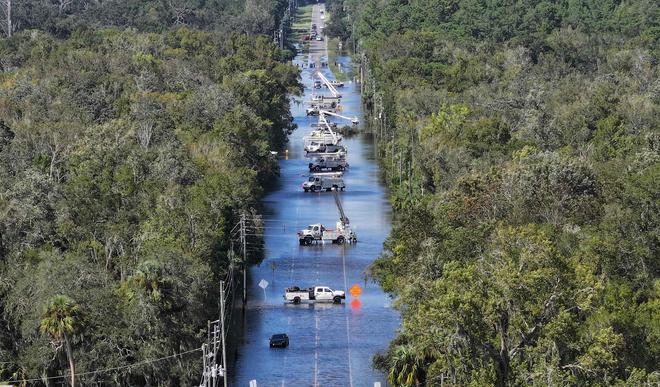
Power crews work on the lines after the hurricane as more than three million people spent the weekend without any power.
Volunteers with Project a non-profit organization based in Alabama serve meals after Hurricane Helene made landfall overnight in Madison, Florida, U.S., September 27, 2024.
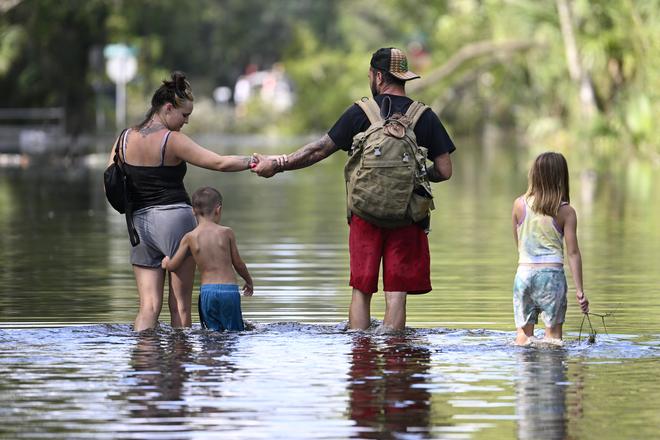
A family returning to their flooded home in the aftermath of the hurricane.
1/3
Mr. Kishore said Asia Pacific countries should regularly dedicate funds in their national budgets for the reduction of disaster risk and should allocate a larger proportion of foreign development aid to disaster prevention and “not simply response.” Such investments have brought down death tolls, he said. “They do die, but the mortality is coming down compared to before,” Mr. Kishore added in an interview on the sidelines of the Manila conference.
Discussions focused on better disaster-warning systems, sharing of technology and building more resilient infrastructure, houses and workplaces.
The Philippines, which is co-hosting the Manila conference, has been in the crosshairs of disasters given its location as an archipelago sandwiched between the Pacific Ocean and the South China Sea, where about 20 typhoons and storms blow across each year. It’s also in the so-called Pacific “Ring of Fire,” where volcanic eruptions and earthquakes have long been a constant threat.
“These are compounded by the increasing frequencies of hazards brought about by climate change, which makes the Philippines at risk and our landscape even more,” President Ferdinand Marcos Jr. told the conference in a keynote speech.
With better access to financing, technology and data, the most vulnerable states could build better resilience, Marcos said.
European Union Commissioner for Crisis Management Janez Lenarcic attended the U.N. disaster-mitigation conference in Manila because he said closer international cooperation was the only way for nations from Asia to Europe to confront “a new reality” of “unprecedented frequency and intensity of weather-related disasters.” “None of us will be able to face these new challenges alone,” Mr. Lenarcic told The Associated Press in an interview. “These disasters know no boundaries.”
Since 2020, the EU has allocated more than 80 million euros ($87 million) to the Asia Pacific region to help finance disaster preparedness and mitigation efforts, Lenarcic said, and he urged wealthier countries to contribute more to such campaigns.
“This region has gained a lot of experience in facing disasters, in building resilience, and we would like to learn also the experiences from this region,” he said of the Philippines and other Asian countries. “It’s a two-way street.”
Published – October 16, 2024 07:27 am IST


